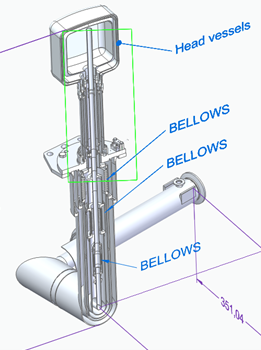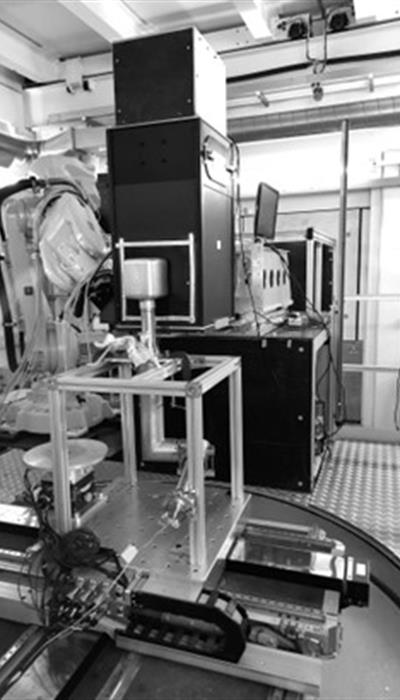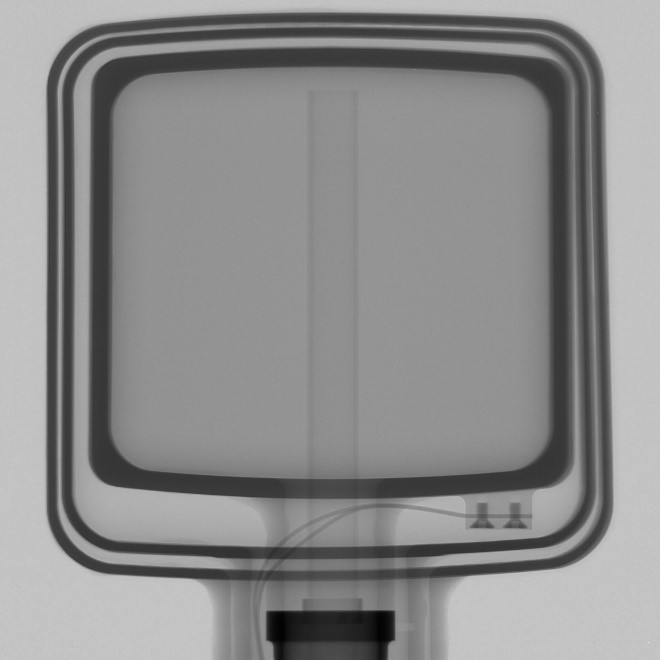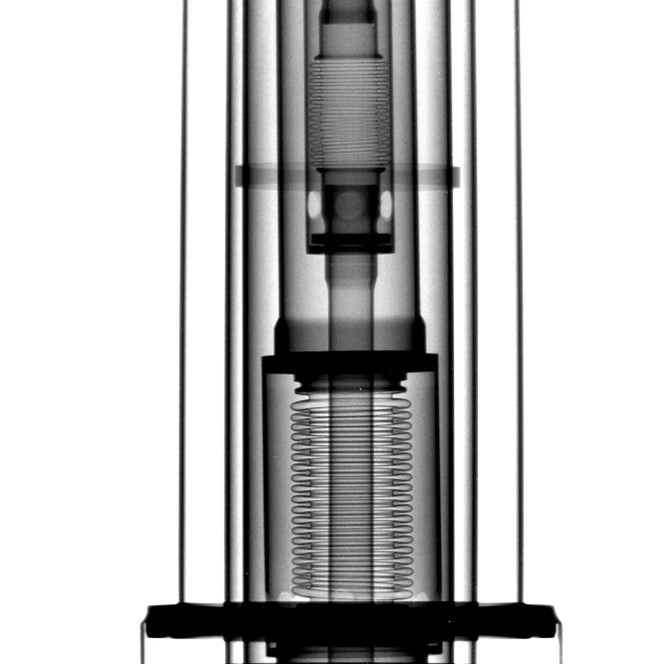In
the process of installing the new TS1 target, reflector and moderator assembly (TRaM)
and making it operational, there have been some unexpected issues with the
hydrogen moderator system. As part of their investigations to understand the
source of the problem, the target design team have used the ISIS neutron
imaging beamline, IMAT.


Above, left: a drawing of the inside of the moderator. Above, right: a photo of the moderator being imaged on IMAT.
Working with beamline scientist Winfried Kockelmann, Dan Coates and Mark Telkman took identical spare moderators and imaged the internal structures. They worked with Chris
Goodway and Ian Hickman from the ISIS pressure and furnace team so they could compare them at ambient conditions and at the moderator operating pressure.
In particular, they wanted to look at the head vessel, made of aluminium, and the bellows area, made of stainless steel. Thanks to the penetrating power of neutrons, they were able to see and evaluate the alignment and distances between internal components inside the system, through the heavy metal casing, both with and without internal gas pressure. This helps, for instance, to identify potential detrimental thermal bridges during the operation of a moderator.
The neutron tomography images they collected show the head vessels (below, left) and bellows area (below, right) with 8 bar of nitrogen in the system. From these images, the team were able to see relative movement, and make measurements of the inner vessels and bellows in the pressurised and unpressurised states. This, in turn, allowed them to better understand the actual operating conditions for the moderator with the additional effects of operating at cryogenic temperatures and the associated contraction of the cold parts in relation to the warm parts. This assisted in identifying potential causes of the operational moderator fault, and in guiding possible design improvements.


